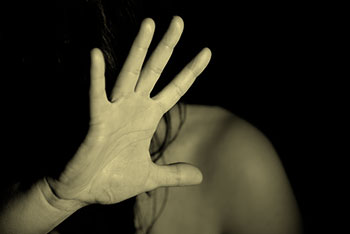
Domestic Sex Trafficking Hidden in Plain Sight
When she was a young girl, Danielle (name changed) was recruited into domestic sex trafficking from her long-term foster home. She was only able to leave this life once her mother regained custody of her.
Sex trafficking, a term used to describe the phenomenon of individuals performing commercial sex through the use of force, fraud, or coercion, is an epidemic. It affects about 25-million people globally. The US-based National Human Trafficking Hotline received 6,244 calls of domestic sex trafficking cases in 2017. Because of the difficulty in obtaining precise information, it is likely that the number affected is higher.
A common misconception about sex trafficking is that it is fundamentally a trans-border phenomenon—that the victim must have been moved from one country to another for the event to be considered trafficking, but this is not the case. While both domestic and international sex trafficking share the feature of forcibly relocating an individual so that the person might perform commercial sex, domestic sex trafficking occurs within the borders of the victim’s country, and sometimes within their own community.
Victims of sex trafficking are controlled by the trafficker. Victims do not choose their clients, or the locations they work at, nor do they keep the money that they receive from clients. They are monitored by the trafficker and cannot leave; their life is at risk if they try to escape. They work in prostitution, pornography, strip clubs, escort services, brothels, massage parlors, and over the internet. While there are people who work in these services by choice, and control their work and earnings, there are many who have been coerced into it and are controlled by a trafficker.

There are many ways sex traffickers lure victims into the sex trade. In many cases, sex traffickers are expert manipulators that prey on a person’s emotional or financial vulnerabilities and offer exactly what the individual needs or desires, such as love and care, lavish items, shelter, money, or a job, with the hopes of later exploiting them. The victim is initially oblivious to the trafficker’s, or their proxy’s, real identity and intentions. The relationship begins as positive but becomes abusive, with the person being forced into, and forced to stay in, the sex trade to work for the trafficker.
There are some populations that are particularly vulnerable. One of the top risk factors in becoming a victim of sex trafficking is having experienced childhood trauma. In an interview with The Trauma and Mental Health Report, Megan Lundstrom, CEO of Free Our Girls (a US-serving anti-trafficking organization) and a survivor of sex trafficking herself, reports the findings from her 2017 project:
“What we found is what we’re calling “The Perfect Storm”. Upwards of 90 percent of the women that we interviewed for that project had experienced some form of child abuse, primarily some form of childhood sexual abuse. When you have that high of a correlation that most women in the commercial sex trade experienced some kind of childhood sexual abuse, clearly there’s something going on there.”
Megan continues by paraphrasing one of the young ladies in her study:
‘I almost feel like I had a sign written on my forehead that said, “I’m damaged goods, please exploit me,”’ in that traffickers know how to single in on those vulnerabilities.”
This is also true for Ana (name changed), whose trafficker was the owner of a tattoo shop. She recalls:
“He asked me a bunch of questions, clearly testing my victim potential before-hand, all under the guise of a tattoo artist apprentice. I took the bait. I had childhood trauma, so I had ‘bait’ practically written across my forehead.”
In terms of recruitment locations, the National Human Trafficking Hotline reports that 15 percent of US sex trafficking recruitment occurs at homeless and domestic violence shelters. A victim of domestic sex trafficking, Jessica, recounts her experience that relates to this finding. She had been abused by her parents as a child, and found herself homeless after being thrown out of the house at age 14. She describes the circumstances of her victimization:
“One day I was at a soup kitchen having coffee and stale muffins for breakfast when I was approached by an older guy, probably late 20s. He asked me to have a real cup of coffee with him and I agreed… mostly because it was nice to have someone speak to me like I was a human being.”
She describes her trafficker using the most common recruitment tactic: posing as a romantic partner (otherwise known as being a Romeo Pimp), and convincing her that he would love and take care of her.
“When he asked me to be his girlfriend, I felt like the luckiest girl alive. God, I was so dumb.”
Jessica goes on to say that her lack of interpersonal supports, such as friends and family, made it more difficult to leave the life of a trafficked person.

Exposure to adverse childhood experiences has long-term consequences, and impacts potential future victimization. Megan explains why this is:
“When you have been assaulted at a young age, you learn how to shut off mentally, you know how to dissociate, you know how to protect yourself but you also struggle with feelings of ‘my body is not my own, I’m not important, this is maybe the only way people care about me’. So when you have that package, that perfect storm of vulnerability starting at a very young age, traffickers go after that.”
The status quo will continue until we recognize that sex trafficking happens in our communities. We can properly identify, and thus intervene in, or prevent, such cases by educating our families and friends, as well as the community. Teachers, the hotel industry, healthcare providers (who can also incorporate trauma-informed care), police, airport workers and child welfare workers can be further educated on how to recognize these red flags while dispelling current unhealthy myths.
-Riana Fisher, Contributing Writer
Image Credits:
Feature: geralt at Pixabay, Creative Commons
First: ninocare at Pixabay, Creative Commons
Second: Richard George Davis at richardgeorgedavis.com, Used with Permission



